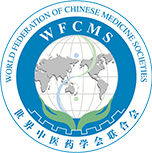Ginkgo biloba waste resources and waste treatment combined with modern progress and development model
Release time: Sept 19,2022
Reading volume: 905
Abstract:
Background: Ginkgo biloba L. is listed in the Red List of Endangered Species by the International Union for Conservation of Nature. G. biloba is an important medicinal plant in China and can be widely used in materials, gardens, and as a source of nutrients. With the large-scale planting of ginkgo plants, China, accounts for more than 70% of the world's total gingko output. Currently, G. biloba P. E. is the main extract under product development and application. However, G. biloba has been discarded as waste for a long time and has not been well developed and utilized. According to incomplete statistics, nearly 40,000 tons are discarded in China every year, which not only wastes resources but also pollutes the environment. Objective: This is an issue of great significance and adds value to scientific research. We aim to develop a key technology for resource recycling by combining G. biloba waste resources and waste treatment. Methods: Data were obtained by searching databases such as CNKI, and analyzing the herb application, modern application, main chemical components, utilization of waste parts, ways and modes combined with waste treatment, and safety of G. biloba. This systematic analysis can serve as a reference for the recycling of waste resources in other fields. Conclusion: The chemical constituents of the outer seed coat of G. biloba mainly include hydrophenols, phenolic acids, and biflavones, among which the phenolic acid of G. biloba can be used to extract glycolic acid, which can inhibit Mycobacterium tuberculosis. The domestic waste produced by tuberculosis (TB) patients contains a large number of bacilli, and the incidence of transmission can be reduced by using glycolic acid to inhibit the growth of TB bacilli in the waste.
Background: Ginkgo biloba L. is listed in the Red List of Endangered Species by the International Union for Conservation of Nature. G. biloba is an important medicinal plant in China and can be widely used in materials, gardens, and as a source of nutrients. With the large-scale planting of ginkgo plants, China, accounts for more than 70% of the world's total gingko output. Currently, G. biloba P. E. is the main extract under product development and application. However, G. biloba has been discarded as waste for a long time and has not been well developed and utilized. According to incomplete statistics, nearly 40,000 tons are discarded in China every year, which not only wastes resources but also pollutes the environment. Objective: This is an issue of great significance and adds value to scientific research. We aim to develop a key technology for resource recycling by combining G. biloba waste resources and waste treatment. Methods: Data were obtained by searching databases such as CNKI, and analyzing the herb application, modern application, main chemical components, utilization of waste parts, ways and modes combined with waste treatment, and safety of G. biloba. This systematic analysis can serve as a reference for the recycling of waste resources in other fields. Conclusion: The chemical constituents of the outer seed coat of G. biloba mainly include hydrophenols, phenolic acids, and biflavones, among which the phenolic acid of G. biloba can be used to extract glycolic acid, which can inhibit Mycobacterium tuberculosis. The domestic waste produced by tuberculosis (TB) patients contains a large number of bacilli, and the incidence of transmission can be reduced by using glycolic acid to inhibit the growth of TB bacilli in the waste.
Keywords: Chemical composition, Ginkgo biloba outer seed coat, Mycobacterium tuberculosis, pharmacological action, resource recycling
[ FULL TEXT ]

